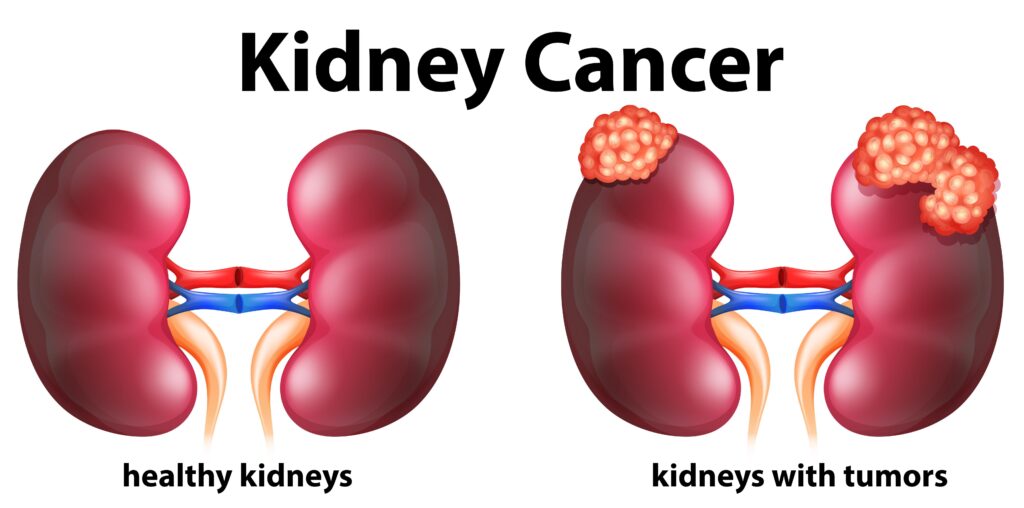Cryoablation is used to kill cancers by freezing them. In cryoablation, a thin probe or probes are placed in the cancer under image guidance to freeze and destroy the tumor with minimal damage to nearby tissue.
Table of Contents
ToggleWhat is Cryoablation?
Cryoablation is a technique used to destroy areas of cancerous tissue. It is a less invasive procedure than surgery and, in some cases, can be performed on an outpatient basis. Cryoablation works by freezing the abnormal cells in the tumor or other area that needs to be removed, causing them to die.
What Type of Equipment Does Cryoablation Use?
Cryoablation uses a probe or probes that are inserted into the tumor using image guidance like ultrasound or CT. Cryoablation uses liquid nitrogen either alone or in combination with other agents such as argon which freezes the abnormal tissue and kills it. Because the area around the probe forms a precisely sized ice ball the exact amount of cancer with a margin can be killed. Therefore, no cancer can regrow in this area, which was formerly occupied by the tumor.
What are The Benefits Of Cryoablation Over Surgery?
Surgery is the gold standard. However, there are times when surgery cannot be performed when you have other medical conditions, for example, and surgery and/or general anesthesia become too risky. Some patients prefer a less invasive procedure with a quick, same day reovery.
Cryoablation is a non-surgical medical procedure can be done on an outpatient basis whereas surgery requires hospitalization. There are also fewer complications than with more invasive surgeries. Patients typically go home the same day of their treatment and report pain is minimal and they are ready to resume most activities.
How Does Cryablation Kill Cancer?
This method uses a probe which is inserted into the tumor or other area where the cancer resides. An ice ball forms and progressively destroys and kills the abnormal cells, leaving a margin of healthy tissue untouched. This margin is important to ensure that all of the cancerous cells are removed.
What Cancers is Cryoablation Used On?
Cryabltion can be performed on may tumors:
- kidney
- liver
- lung
- bone
- breast
- prostate
- endometrial
- bladder
- metastases
Why is Cryoablation Used For Kidney Cancer?
Cryoablation is especially useful for renal cell cancer treatment since the collecting system more central in the kidney can be close to a probe and not damaged. The ice ball near the collecting system in the renal pelvis will destroy renal cancer cells without damaging the collecting system that brings urine to the bladder. This means that, unlike other ablative methods using heat, like microwave ablation and radiofrequency ablation, more central renal cancers can be successfully treated. This is a very important way in which cryoablation is a superior treatment.

What are The Kidneys?
The kidneys are paired bean shaped organs that are located at the back of the abdominal cavity, just above the waistline. The kidneys are responsible for filtering wastes and toxins from the blood to create urine. The urine then flows from the kidneys down a tube called the ureter to the bladder, where it is stored until it is expelled through another tube called the urethra.
Kidney cancer affects more than 57,000 Americans every year and is the seventh most common cancer in the United States. Most kidney cancers develop in any part of the kidney, but is more likely to occur in the outer edge of the organ. Symptoms may include pain in the side or back, blood in the urine, a mass or lump in the abdomen, weight loss and high blood pressure.
What are The Treatments For Kidney Cancer?
There are many treatment options for renal cell carcinoma, including surgery, radiation therapy, and targeted therapy. However, each person’s cancer is unique and may respond differently to different treatments. Cryoablation is another option that may be used for tumors that are not operable or have spread to other parts of the body.
Cryoablation is also an effective treatment for many types of cancers.
What are The Side Effects?
Cryoablation is less invasive than surgery so there are fewer complications, but there are still some risks. General complications of any kind of surgery even less invasive cryoablation, include infection, and bleeding. More specific to cryoablation would be damage to surrounding healthy tissue due to probe movement or too small an ice ball created for example. However image guidance using CT (computed tomography) or ultrsound.
minimizes these possibilities. Patients who receive cryoablation need close follow up e.g every 3 to 6 months for the first 2 years- until it can be determined with high certainty whether or not all cancer has been removed from the treated area . Once this time period has passed if no recurrent disease occurs then patients can follow up annually and then with their referring physician.
How is Cryoablation Performed?
Imaging & Inerventional Specialists will perform and history and physical exam to determine if the patient is a good candidate for cryoablation. We will also discuss what you can expect from your procedure and answer any questions you may have about the process. Your imaging will be reviewed by the interventional radiologist and a plan will be made and discussed with you. Lab orders will be given to ensure you blood is clotting normally and other tests may be ordered as well.
On the day of your procedure you will check in for your outpatient procedure The staff will insert an IV line and give you medications to make you comfortable. Your imaging studies are reviewed once more before the procedure begins. A specially equipped CT scan machine takes images during your cryoablation treatment, to ensure precise needle placement by the interventional radiologist- who sits behind a window out of your field of vision. By reviewing these images, Imaging & Interventional Specialists can determine if tissue has been destroyed as intended by the ice ball made by the probe inserted into your body during this procedure. An ice ball forms and progressively destroys and kills the abnormal cells, leaving a margin of healthy tissue untouched. This process can typically take 15 to 45 minutes
What Happens After Cryoablation?
Your body has an amazing ability to heal itself. Patients may experience some soreness at the site of treatment which we manage with analgesic medications such as acetaminophen or ibuprofen.
Imaging & interventional specialists “pinhole” procedures: fast recovery, less risk, less pain, comfortable setting.
Compared with open or laparoscopic surgery cryoablation with small probes or probes is a non-surgical, usually same day, outpatient procedure. Our experienced board-certified specialists successfully perform “pinhole” procedures every day offering this region leading, state-of-the-art solutions for renal cell cancers (kidney cancer) as well as other cancers. Our non-surgical image guided procedures are cutting edge technology without the cutting, without the scalpel. You leave with a Band-Aid!
- Procedures are usually done in a comfortable outpatient setting with familiar friendly staff.
- Pinhole procedures offer fast recovery, less risk, and less pain

Why Imaging & Interventional Specialists?
Imaging & Interventional Specialists are leaders in interventional radiology providing world class, non-surgical procedures that successfully treat your kideny cancer or other cancer.
Using state-of-the-art equipment, our experienced board-certified specialists are focused on your best cancer outcome.
At Imaging & Interventional Specialists board certified physicians offer in-house testing for diagnosis and to develop an individualized treatment program for your kidney cancer or other cancer.

